Precision Engineering forms the backbone of diverse industries such as Aerospace, Automotive and Defence Manufacturing across the UK. That said, the sector’s implementation of AI continues to lag behind other industries. In this article, we look at the impact of AI and Machine Learning in UK Precision Engineering and what that might mean for the workforce of the future.
The world of precision engineering and manufacturing has long been grounded in tried-and-true practices, where the margin for error is often razor-thin. This traditional mindset, coupled with the complex nature of these industries, has contributed to a cautious approach towards adopting new technologies like AI. Additionally, the complexity of integrating AI seamlessly into existing processes, along with concerns about implementation costs and the need for specialised expertise, has created a hurdle that many have been hesitant to leap.
However, as the benefits of AI become more evident – from cost savings to improved quality and efficiency – the tides are gradually shifting, ushering in a new era of collaboration between human expertise and machine intelligence.
Â
AI-driven Automation that saves time and money
Harnessing AI automation in precision engineering and manufacturing streamlines tasks, slashes production times, and optimises resource utilisation. CAM programming, for example, a task that can demand substantial time and effort can now be executed with remarkable efficiency. This accelerates the manufacturing process and frees up skilled personnel to focus on higher-value aspects of production, fostering innovation and growth. In an environment where precision is paramount, AI automation emerges as a reliable ally, ensuring that operations meet and exceed the rigorous standards synonymous with UK manufacturing excellence.
Â
Predictive Analysis and Maintenance
AI offers a crucial edge to the engineering sector through its skilful predictive analysis. By harnessing the capabilities of machine learning algorithms, AI can assimilate insights from past occurrences and data patterns, empowering it to anticipate imminent system failures or glitches. This proactive identification mechanism empowers engineers to tackle issues before they escalate, resulting in substantial reductions in maintenance expenditures and the mitigation of potential safety hazards.
Moreover, AI-driven predictive maintenance utilities possess the potential to streamline the inspection process seamlessly. Through the real-time analysis of data obtained from sensors affixed to machinery, these utilities can promptly notify engineers about the gradual deterioration of machine components. This, in turn, facilitates more punctual maintenance actions and elongates the operational lifespan of the equipment.
Â
Quality Inspection and Assurance
In the quest for quicker and more dependable defect detection, numerous manufacturers have embraced AI-driven computer vision solutions. This pursuit is unsurprising, given the well-known fact that defects carry a substantial financial burden.Â
While prevailing automated optical inspection (AOI) machines demand substantial human intervention and financial resources, emerging approaches hold the potential to harness AI and ML more efficiently. These innovative methods can greatly enhance the quality of manufactured components. They excel at identifying a spectrum of defects, ranging from cracks and imperfections to misassembly, faulty joints and more.
Conclusion
In the dynamic landscape of precision engineering and manufacturing, not every player is destined to spearhead the forefront of cutting-edge AI. That said, the potential gains from integrating AI are substantial. Irrespective of size or ambition, manufacturers stand to reap the rewards of enhanced quality, streamlined efficiencies, bolstered supply chains, and a rapid surge in value and innovation. The only question that remains is what these advances in technology would mean for the workforce of the future.
Yes, perhaps we won’t always be able to protect jobs that are made redundant by technology. However, as technology develops so will new jobs and opportunities that have never existed before. So what we can do is make every effort to protect the workforce of the future by making sure we nurture adaptability, agility and re-skilling.
We would love to hear from you, what do you think?
< back to other articles



